Trainees 2011 - ESAC Trainees
 The 2011 Project |
Trainees
|
Study of a New Open Geospatial Interface to the PSA
Tutors. Dave Heather & Nicolas Manaud During the last decade, the planetary mapping science community has shown an increasing interest for Geographic Information Systems (GIS) technology (software, interoperability of sources of data, etc.), and more recently for OGC Web Services. A fraction of this community is using the ESA's Planetary Science Archive, the PSA, as a source of data collected by solar system missions. Although the PSA is interoperable through the developing Planetary Data Access Protocol, its current interfaces as well as hosted data sets themselves (using PDS standards and format) lack interoperability with existing Planetary OGC Web Services and GIS-compliant map products and tools. In order to explore the benefits, limitations, and feasibility of an OGC-compliant interface for the PSA, my task was to design and implement a Web-based GIS prototype allowing to search, process, retrieve and visualise a subset of the planetary geospatial data sets currently in the PSA. This subset will mostly consist of the Mars Express/OMEGA hyperspectral data sets, hence supporting the instrument team in the implementation of an OGC Web Service for the distribution of their current and future map products.
|
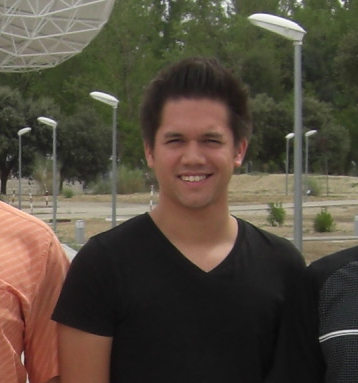 |
Bryan Hempen University of Osnabruck |
|
Ascension Lopez Vargas
Universidad de Alcalà
|
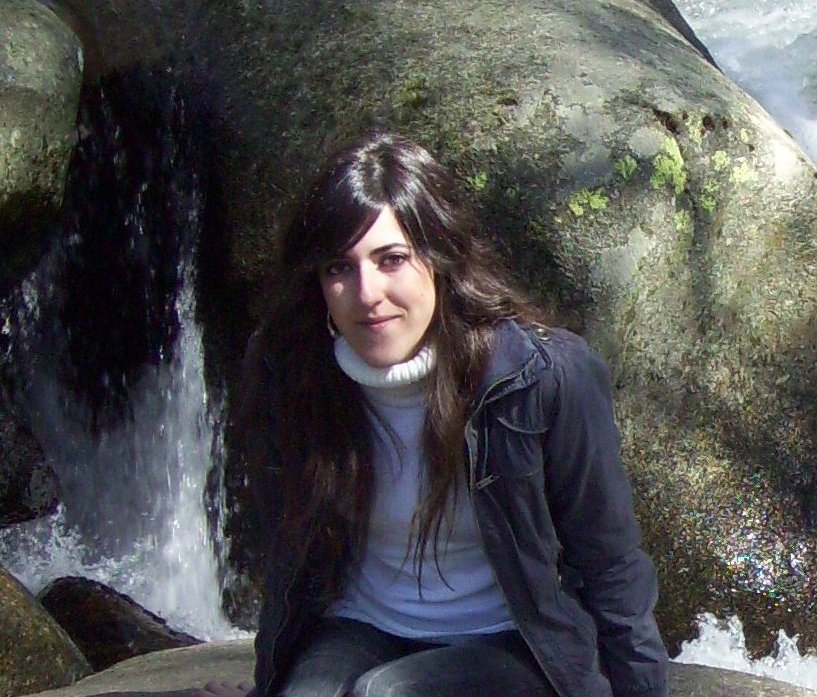 |
Soft X-ray Background Tutors. Norbert Schartel & Matthias Ehle The origin of the X-ray background is one of the leading topics in X-ray astronomy since about 30 years. Above energies of about 1 keV the background is dominated by extragalactic sources mostly active galactic nuclei. Below 1 keV the background has to be explained by several components including extragalactic source emission, emission of the solar system and diffuse emission of the galaxy. The goal of my project was to generate the highest signal to noise spectra of the X-ray background of selected regions and to analyze the different components with the aim of better characterizing the contribution of extragalactic sources for lowest energies. My project consisted of developing a script which allows us to filter effectively background flares, and accurately masks point and extended source contributions automatically.
|
|
Ground and space-based observations for the forecasting of coronal mass ejections
Tutors. Alexi Glover & Jens Rodmann Coronal mass ejections (CMEs) are a manifestation of space weather. Space weather is an important consideration in our increasingly technologically-reliant world as it can have a detrimental effect on both space and ground based systems. In space, spacecraft can malfunction as a result of radiation damage and, at Earth, GPS and long-distance radio signals can be disrupted by disturbances of the ionosphere which can have a significant effect on navigation and communication systems. Humans in space are also particularly vulnerable to space weather as ionising radiation can be harmful to the human body. Thus it is vital that space weather is both monitored and predicted to reduce the risk to these ground and space based systems. My project focussed on researching the current observations of the Sun and the space environment that are currently made to aid the forecasting of CMEs and their subsequent effects at Earth. The ultimate aim was to propose observations that could be made to improve the forecasting of CMEs in the future.
|
 |
Sian Cleaver University of Durham |
|
Maxime Legendre
Ecole Centrale de Nantes
|
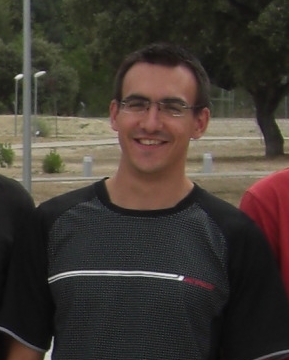 |
Analysis and Visualisation of Planetary Datasets Tutors. Albrecht Schmidt & Erwan Treguier Non-negative matrix approximation algorithms make it possible to factor a collection of spectra into sources and abundances under linearity and non-negativity constraints. So far, tools to perform such a factorization on planetary data, through several kinds of algorithms, have been developed at ECN (Ecole Centrale de Nantes) and ESAC, under Matlab and Python. The aim of my project was to improve the implementation of these tools, including user interactivity during processing and more informative graphical output, with the ultimate aim of applying this approach to ESA's archived science data.
|
|
Astronomical Maps and Catalogues with Herschel-SPIRE
Tutors. Ivan Valtchanov, Luca Conversi, Bruno Altieri & Daniela Coia The Herschel space observatory, launched in May 2009, aims to explore the far-infrared and sub-millimeter universe. The Herschel telescope of 3.5 m diameter is the largest telescope currently in space. One of the three instruments on-board Herschel is the Spectral and Photometric Imaging REievier (SPIRE). The photometer sub-instrument of SPIRE can register signals from the sky simultaneously in 3 relatively broad far-infrared bands centred on 250, 350 and 500 microns. Due to its unprecedented sensitivity SPIRE can map very quickly scan large areas of the sky and can detect millions of distant galaxies, especially from fields at high Galactic latitudes, where the contamination by the dust and the gas in our own Galaxy is not so significant. The goal of my project was to extract high-fidelity galaxy catalogues from SPIRE scan maps. In order to achieve this I learnt about the SPIRE instrument and the standard SPIRE scan map data processing. I then applied advanced processing methods to improve the maps, extract and compare the sources from the maps using different source extraction techniques and produce the final catalogue.
|
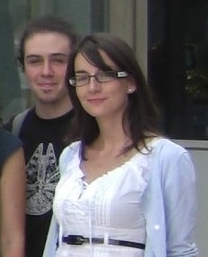 |
Natalia Larrea Brito Open University & Universidad Alfonso X El Sabio |
|
Marta Garcia
Universidad Complutense de Madrid
|
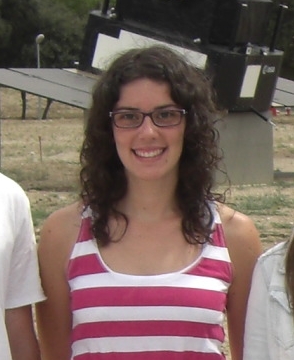 |
Analysis of Infrared Data of Planet-Forming Transitional Disks Tutors. Hervé Bouy & Bruno Merin Infrared observations of young stars reveal the formation of large inner holes in some circumstellar disks where planets could be currently forming. These are called transitional disks. Analysis of the infrared spectra obtained with Herschel of young stars help identify the mechanisms that form these holes and possibly the best conditions for the formation of exoplanets. During my project I performed spectral analysis of observations from the DIGIT Herschel Key Program.
|
|
Disk Evolution in Young Stars and the Formation of the Exoplanets
Tutor. Bruno Merin
Infrared observations of young star-forming regions reveal different evolutionary trends in the fate of their protoplanetary disks. Analysis of the Spectral Energy Distributions (SED) of large samples of young stars help identify the mechanisms that form transitional disks and possibly the best conditions for the formation of exoplanets. My project consisted of doing SED analysis for existing samples of young stars with Spitzer and Herschel data as part of the Gould's Belt Key Program.
|
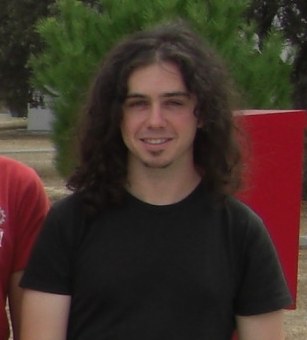 |
Alvaro Ribas Universidad Complutense de Madrid |
|
Luca Gagliano
University of Milano-Bicocca
|
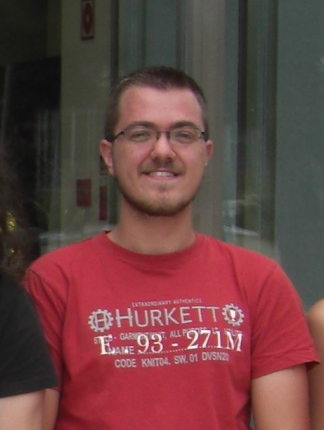 |
X-rays Vanishing in the Interstellar Medium Tutors. Jan Uwe Ness & Andy Pollock A X-ray astronomer's view of a star, black hole or quasar can be spoiled by photons that disapper while travelling through interstellar space. An encounter with a heavy atom or molecule can prove fatal. Nearly everyone's X-ray spectrum bears the chemical imprint of the intervening medium because different elements absorb different wavelengths. With the high resolution of the RGS, the spectrograph on XMM-Newton, the quantum mechanics also become visible. The objective of my project was to gather the best RGS data, analysis the data and learn as much as possible about the physics and chemistry of the interstellar medium.
|
|
3D Visualization Interface for a Scientific Mission
Tutors. David Frew & Federico Nespoli Rosetta is the third cornerstone mission in ESA's Horizons 2000 program. It was launched in 2004. After 7 years of Cruise phase with 4 planetary swing-bys and 2 Asteroid fly-bys it will enter into Deep Space hibernation in June 2011. Rosetta will reach its main mission destination, Comet 67P/Churyumov-Gerasimenko, in 2014.
The objective of this project was and still is, since work still needs to be done - to investigate the 2D/3D innovative software techniques for the visualization of the simulated planning elements coming from the system (for example: planning windows, solar system environment, spacecraft attitude, instrument view, etc...). My task was first to identify the best software libraries which can be used to create a prototype for the visualization software. Then, I started the implementation of the actual prototype. The results proved to be quite good - a simulation of the Rosetta mission that includes most of the required simulated planning elements. However, the end result is only a prototype, which essentially means it is incomplete and still has some problems. To be noted is the fact that the main objective has been achieved - a working prototype has been created using several technologies (Java, JmonkeyEngine 3 - for graphics, JfreeChart, MySQL DB etc). This demonstrates that a complete application can be created to fulfill the needs of 2D and 3D visualization (using the selected technologies), for the Rosetta mission. |
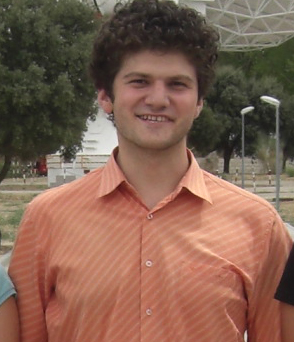 |
Dan Avram Technical University Cluj-Napoca |
|
Annika Kreikenbohm
Julius-Maximilians University Würzburg
|
Iron Abundance in AGN from the Compton-Thick XMM-Newton AGN Sample Tutors. Giovanni Miniutti & Matteo Guainazzi Active Galactic Nuclei (AGN) are among the most powerful sources of radiation in the Universe and they are powered by accretion of gas onto a central super-massive black hole. The radiation from the central engine interacts with the surrounding gas and dust which produces a series of atomic spectral features, in particular, an iron emission line is almost always present in the X-ray spectra of AGN. The goal of my traineeship was to obtain reliable measurements of the iron abundance and ionization state of the circumnuclear material of Comton-thick AGN observed with XMM-Newton.
|
|
|
Baseline and Software Development Environment Management System
Tutor. Vicente Navarro The Space Situational Awareness (SSA) is defined as a comprehensive knowledge, understanding and maintained awareness of the population of space objects, the space environment, and the existing threats/risks. The goals of my traineeship was to perform an assessment of SSA needs in terms of Software Developement Environment (SDE) information; evaluate the industry state-of-the art available tools and their applicability to ESA's needs; implement a prototype extending previously selected COTS in order to maximis task automation and accessibility to information; apply the prototype to a real project in the SSA programme; and evaluate the results, advantages and dissadvantages.
|
Aurelie Havet Universitè Catholique de Lille |
|
|
Sara Bertran de Lis Mas
Universidad Complutense de Madrid
|
What do the X-ray Spectra tell us about the Properties of the Inner Regions of an Active Galactic Nuclei Tutors. Ignacio de la Calle, Matteo Guainazzi, Martin Stuhlinger & Mike Smith Active Galactic Nuclei (AGN) are among the most powerful objects in the universe. The origin of their energy output is believed to be accretion onto a supermassive (million to billion solar masses) black hole. The AGN radiation interacts with gas the dust in the galaxy core, producing characteristic X-ray spectral features such as fluorescent and/or recombination lines from elements with a widely varied degree of ionisation. The goals of my project were to search for weak spectral signatures in the stack spectra of a sample of AGN; produce a software package to produce the stacked residuals; and to derive average properties for the AGN samples and to estimate the systematic errors present on a given data set due to calibration uncertainties.
|
|
|
EPIC Pattern Characteristics
Tutor. Norbert Schartel One of the main instruments on board XMM-Newton, the EPIC camera, consists of two MOS CCD cameras and one pn CCD camera. Each registered photon is recorded in one, two, or more pixels, creating the different so-called patterns. For spectral analysis, information on the incident photon is reconstructed based on the pattern geometry. The aim of my traineeship was to analyse the pattern behaviour, considering the physical nature of the sources and background (flaring) events, and to expand the currently available usable information.
|
Hugo Boullosa Universidad de Vigo |
|
|
Rubén Gonzalo
Universidad Complutense de Madrid
|
Scientific Assessment and Comparison of the Different Mappers for Herschel PACS Scan Maps Tutors. Bruno Altieri, Ivan Valtchanov & Roland Vavrek The Herschel observatory, launched in 2009, is the largest space telescope to explore the far-infrared and sub-millimetre universe. The PACS photometer sub-instrument is mapping large areas of the sky in 3 far-infrared bands, 70, 100 and 160 microns, at unprecedented sensitivity and spatial resolution. The imaging is performed by scannig the telescope in large circles in the sky with bolometer arrays of relatively small footprints on the sky. Several mappers have been designed to reconstruct sky maps from the data cubes with different algorithms. The goal of my project was to compare and characterize the relative strength and advantages of the different mappers in terms of sensitivity of extended emission as well as point-sources, and processing speed.
|
|
|
Design and Implementation of a Planetary Science Data Generation Tool
Tutors. Dave Heather & Jose Luis Vanzquez The European Space Agency's Planetary Science Archive (PSA) is the central repository for all data from ESA's Solar System missions. PSA currently contains data from Mars Express, Venus Express, Rosetta, Huygens, SMART-1 and Giotto missions. The information within the PSA is organised into datasets. A dataset is a set of scientific data products for a given instrument, along with the documentation, calibration information, and any other auxiliary data and software needed to be able to understand and use the scientific data. The main aim of my traineeship was to design and implement a graphical user interface prototype that allows the design and automatic generation of a dataset.
|
Jakob Wankel Univerisity of Stuttgart |
|
|
Friedrich Anders
Universidad Autónoma de Madrid & Techinical Universitat Dresden
|
Towards a Be/X-ray binary outburst catalogue Tutor. Peter Kretschmar With the advent of constant satellite-based monitoring of galactic X-ray sources, their long-term behaviour has been studied intensively. One especially interesting class of X-ray variables is the Be/X-ray binaries. Their variety in X-ray behaviour is, however, so great that it has been found necessary to embark on the project of systematically cataloguing their outbursts in order to be able to statistically compare theoretical models with more than 20 year's worth of data. During the project I collected data from the satellites CGRO, RXTE, Suzaku and Swift, worked on the extraction of relevant data/key parameters and on a preliminary outburst catalogue.
|
|
|
Scheduling Optional Tasks in an Over-Constrained System of Dependent Resources with Genetic Algorithms
Tutors. Harold Metselaar & Gerhard Schwehm The Rosetta Science Ground Segment (SGS) will be responsible for coordinating the science planning activity for the orbiter instruments, with the goal of maximizing the contribution of instrument observations towards the scientific objectives of the Rosetta mission. Science planning leads to complex planning and scheduling problems. The core characteristics of these problems is the allocation of shared and limited resources (e.g. data storage, downlink time, etc) to competitive activities (observations and measurements by the different instruments onboard the satellite) over a given period of time, taking various dependencies and constraints between the activities into consideration. The aims of my traineeship were to research possible approaches to these problems, perform a comparative study and to implement a prototype.
|
Katharina Seitz Vienna University of Technology |
|
|
Tobias Beuchert
University of Erlangen-Nürnberg
|
Where are the Obscuring Clouds in the Central Regions of Active Galaxies? Tutors. Matteo Guainazzi, Alvaro Labiano, Ignacio de la Calle & Giovanni Miniutti A large fraction of Active Galactic Nuclei (AGN) show absorption features from neutral matter in their X-ray emission. The nature and location of the absorbing material is still largely unknown. One source of information are the observations of short and long time scale spectral variations due to the obscuring material moving along the line of sight. Monitoring programs represent on the the best ways to catch these sources in different states allowing to constrain the location of the absorbing material within the environment of the AGN central region. The aim of my traineeship was to create a software package to monitor the Swift satellite AGNs and produce information, including spectral plots, of the selected AGN sample.
|
|
|
Early Science with Gaia. Exoplanet Orbit Inclinations
Tutors. Alcione Mora, Ralf Kohley, Frederic Raison & Benjamin Montesinos Gaia will produce a three-dimensional map of the positions and proper motions of one billion stars in the Galaxy to an unprecedented astrometric precision. Each star will be observed approximately 76 times with ~17 microarcseconds precision along different great circles. This precision is enough to measure the reflex motion of nearby stars hosting Jupiter-mass exoplanets. The aims of my traineeship were to gather orbital parameters for all exoplanets detected using radial velocities; generate noiseless observations for all exoplanets using the Gaia Catalogue simulator; add noise following realistic predictions of gaia performace; determine the best inclinations from the simulated data using an RMS minimisation algorithm.
|
Eduard Bopp University of Heidelberg |
- Removed a total of (4) style text-align:center;
- Removed a total of (1) style text-align:left;
- Removed a total of (45) style text-align:right;
- Removed a total of (26) style text-align:justify;
- Removed a total of (54) align=top;
- Removed a total of (4) align=center.
- Removed a total of (2) border attribute.
- Removed a total of (1) cellpadding attribute.
- Removed a total of (1) cellspacing attribute.








































 Sign in
Sign in
 Science & Technology
Science & Technology